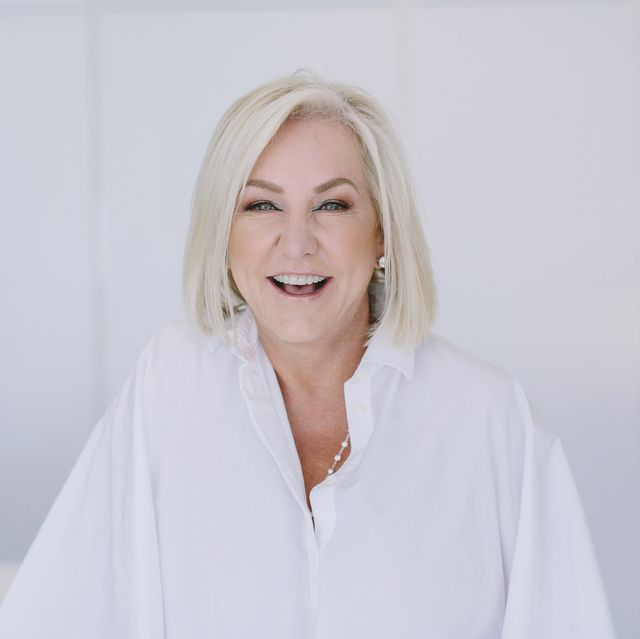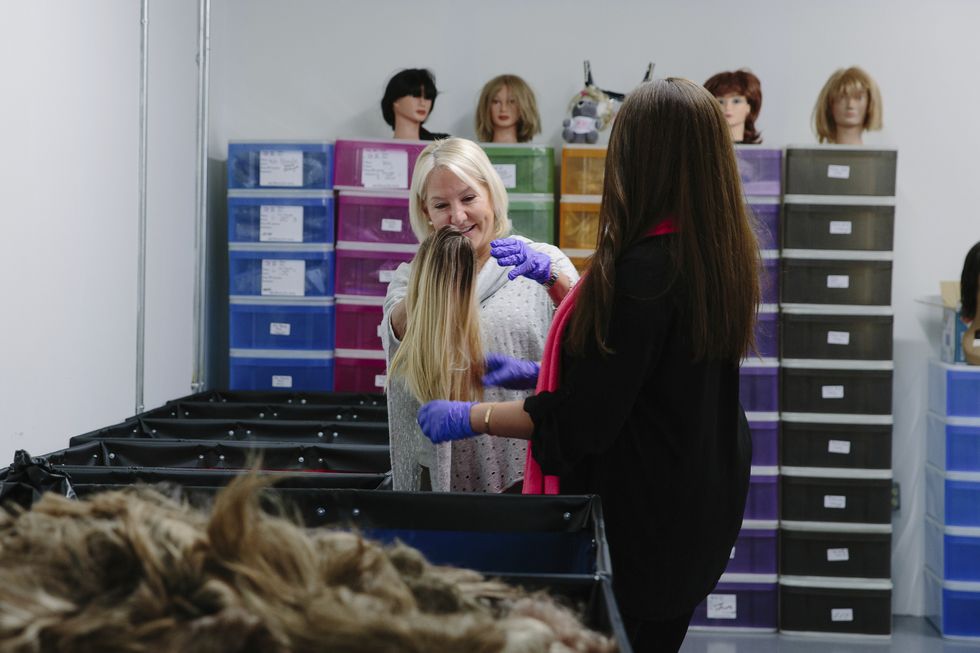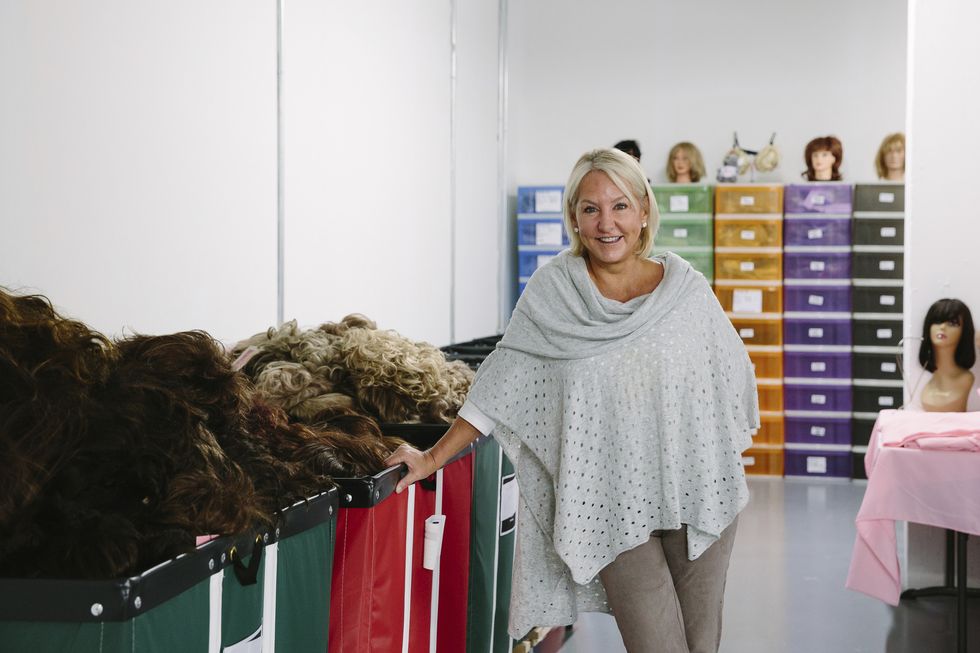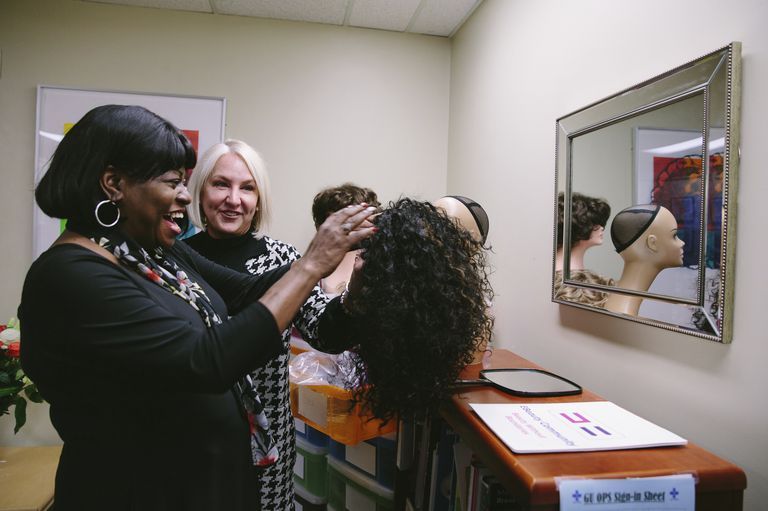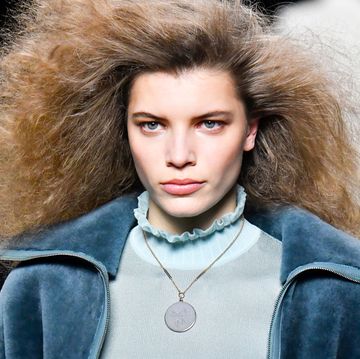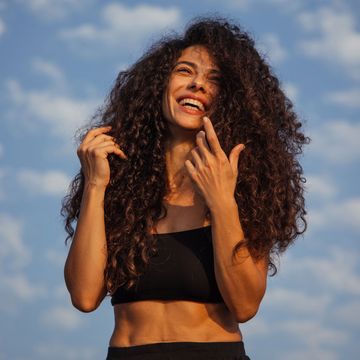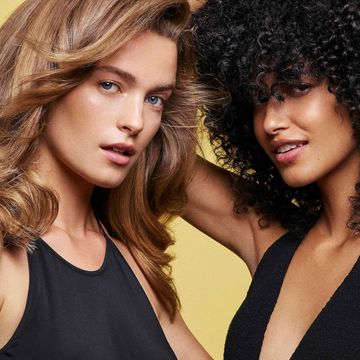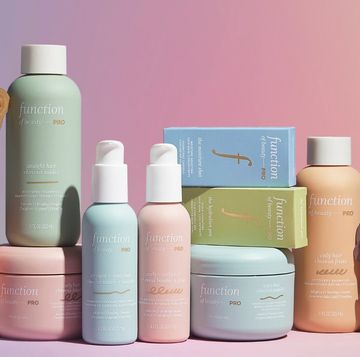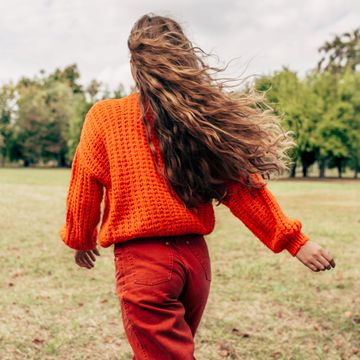After losing her hair to a second cancer diagnosis eight years ago, Carolyn Keller founded EBeauty, a wig exchange program for women battling all forms of cancer. The premise of the organization is simple: A woman who has come to the end of her journey with cancer donates her wig to the organization, which then sanitizes, styles, and repurposes the wig for another woman who has just been diagnosed. It's a beautiful way for the newly diagnosed to feel inspired and connected to the women who have battled the disease before them, and at the same time a cathartic experience for a woman who is ready to let go of what can be a physical reminder of illness.
Thanks to Keller, no woman pays a single cent for her EBeauty wig, and so far the organization's efforts have impacted nearly 30,000 women across the country. For her meaningful work in the cancer community, Keller is one of L'Oreal's 10 Women of Worth nominees this year, and could earn a $25,000 donation to Ebeauty from the cosmetics powerhouse if she's voted as the brand's National Honoree in December.
Here, Keller describes the good, the bad, and the ugly of cancer—everything from losing her toenails to finding a new family—and how EBeauty is changing the lives of women one wig at a time.
How would you describe what EBeauty is to someone who has never heard of the organization before?
The concept of EBeauty is to support women undergoing treatment for cancer—through our wig-exchange program and more recently through the hospital partnership program. The wig exchange program is the simple premise that has a powerful impact. One woman donates her wig to EBeauty, it gets cleaned, it gets refurbished, restyled, reprocessed, and then it is donated to another woman who is just starting her journey. And I mentioned the hospital partnership program, that is…we had so many wigs come in that we decided we needed other outlets to be able to distribute them. To get them into the hands of the women that needed them the most. So once that worked, and it worked so well, we decided to expand that program and now that’s probably our biggest outlet for getting wigs out into the community.
How did your own diagnosis come into play when starting EBeauty?
I was diagnosed with cancer twice, unfortunately. In my family there have been five women that have been diagnosed with cancer, myself included. So it definitely hit our family. It’s been very impactful for us. Quite frankly, you hear those words and you’re terrified. And in my case (the first time around), I did not have to do chemo, luckily. I was more terrified of that than anything else. For some odd reason it seemed easier for me to have a double mastectomy.
So I went that route, all clear, no worries, thought I was good to go. And then a year and a half later I felt another lump. And that’s when life definitely took a different turn.
I went through chemo, I lost all of my hair everywhere—toenails, everything. The first physical, real sign that you’ve got cancer is when you’re losing your hair. It was losing my hair that really was the realization of "Oh my god, now I look ill. I look sick." It was very traumatic, very hard. And because of the work EBeauty does, I hear lots of stories, and this is not an unusual feeling. I think everybody has the same moment of taking a deep breath and going "Oh my God, I’m going to lose my hair."
What was the exact moment for you where you decided to start EBeauty?
We had five different women in my family that went through cancer. And one family member had offered her wig to another and when they exchanged it, all of the sudden the idea clicked. And I thought, You know what, if it can work in my family, why couldn’t it work with other families, or why couldn’t it work across the country? Why couldn’t women work on this sort of exchange idea? And at that moment EBeauty sort of came to reality.
Did you feel like your identity was compromised when you were going through chemotherapy?
If you start your day looking in the mirror and feeling like, My God, I’ve got cancer and it could win—because it’s a battle, it’s definitely a war that we’re fighting.
And if you look in the mirror and you see that, you have to change your mindset to Okay, I’m going to fight this and I need my armor. And a part of my armor is my hair. And I have this wig and she’s going to help me get through the day. And it's very difficult for a lot of people for a number of reasons. They’re in the workplace and they don’t want their coworkers 1) to know or 2) to be discussing it or constantly be reminded of it with questions of ‘How do you feel today?’ And then there's the impact on young children—so many young women are getting diagnosed now and they have kids in the house that don’t quite understand why Mommy is losing all of her hair. There are definitely some women that soldier on [without wigs]—we had an event with Robin Roberts and she donated her wig to EBeauty on her show, Good Morning America a couple years ago. And when she was going through how it impacted her, she said the first time [she was diagnosed] she was meeting with presidents and she didn’t want to be bald because she didn’t want the story to be about her. And the second time she was like, ‘Have at it. You know what? I have cancer and I’m not going to worry about it.’ So it impacts people differently, but I’d say the majority of us want that extra bit of confidence.”
What's been your favorite part of founding and working with this organization?
One thing that we did not realize in the very beginning of this was how important it was for the woman who was donating her wig, how it was a way for her to move forward and put her cancer behind her. And to at the same time be able to support another woman, so kind of making it a whole circle of giving, receiving, and giving again. I have to tell you, it really is such a simple premise. With all the horrible things going on in the world today, it’s such a nice thing to see that somebody cares, packages up their wigs, sends them in to us with lovely notes—a lot of times with a donation to help us with the cleaning, shipping, or whatever. And they're all really just saying, "I just want to help the next woman with this. I can’t do a lot, but I can do this."
What if EBeauty didn't exist? What would the women you serve pay (out of pocket) for a wig?
They can be anywhere from around $300-$5,000. And if you think about it, most of the ones that are donated are on the upper scale. We're getting beautiful wigs that were barely ever worn, and they kind of tell a story. If we're looking for a long, blonde-haired wig, we go to the packages from Dallas. You know? You really start to identify where wigs are coming from and what women are wearing in different parts of the country. But they can be extremely expensive, especially for the woman who doesn’t have the ability to pay her medical bills. It’s just another burden on her shoulders. We ask for a doctor’s note or an oncology note and that’s the extent of it. And then the wigs are free. And basically you could have a note from your mother and we’d give you a wig. We want to get as many out into the hands that need them.”
A single wig can set a woman back anywhere from $300-$5,000.
Tell me about your relationship with your own wigs.
I had two, and I had personally named my wigs, they were my friends, I welcomed them every morning. There are a lot of women who wear two or three, so maybe they have one that they’ve paid for and they want a backup wig, they can come to Ebeauty for that. We don’t stipulate, really.
If you’re selected as the National Honoree, L'Oreal will donate $25,000 to EBeauty. What would you do with those funds?
It’s my goal regardless, whether we win or don’t, to add more hospitals to the program. Right now we have 10 hospitals that are actually on site giving the wigs out, and they’re major—they're John Hopkins, they’re Georgetown University, they're MedStar, and they're across the country. So I would like to see us be in all of the major markets and then sort of filter out to the sub-markets until we cover the country. So that’s where my expansion process is.
What has it been like to work with—and be nominated by—L'Oreal as a Woman of Worth?
I actually was nominated by a board member and didn't know anything about it. So when I was selected I almost thought it was a joke. I was like, "Really, this isn’t actually L'Oreal is it?" I was very honored. And I'm amazed with the organization and their outreach and their ability to have the foresight to recognize women like myself that really have our boots on the ground and are trying to make a difference.
All of the nominees are really making a difference because we saw an inequity in the community and decided to make a difference and change it. So to be honoring [these women] is very insightful on their part and I think it speaks highly for how, in today’s world, we see women. It isn’t just about the tall, thin blonde. It’s about a woman who feels good in her skin and is confident and is willing to stand up for herself and make a difference and be counted. And I think [L'Oreal] recognizes that.”
Click here to vote for L'Oreal's Women of Worth National Honoree. Voting ends Friday, November 30 and the National Honoree will be announced on December 5.
